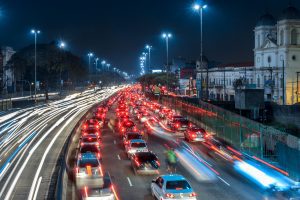Subscribe
Sign up for timely perspectives delivered to your inbox.
The Global Sustainable Equity Team, led by Hamish Chamberlayne, break down sustainable design and explain how the team incorporate it into their investment approach.
What is design? This is a hard question to answer because it is so complex. The term encompasses more than just aesthetics. It is applied when describing objects, systems and processes, used to shape the way we communicate and how we live and linked to the identities of individuals, organisations and nations.
John Heskett, a scholar and lecturer on the economic, political, cultural and human value of industrial design, stated that “design, stripped to its essence, can be defined as the human capacity to shape and make our environment in ways without precedent in nature, to serve our needs and give meaning to our lives”.1
He was right. The clothes you wear, the chair you sit in, the dwelling you live in and the manmade items that you can see were all designed. Even the font you are reading right now was designed. As humans we use design to serve our needs, and we believe that should also extend to sustainability.
The Janus Henderson Global Sustainable Equity Strategy was created in 1991, informed by the Brundtland Commissions’ definition for sustainable development.
“Sustainable development is development that meets the needs of the present without compromising the ability of future generations to meet their own needs” 2
The strategy places great importance on the triple bottom line3, that is, to invest for profit, people and the planet in equal measure – see exhibit 1.


What is design? This is a hard question to answer because it is so complex. The term encompasses more than just aesthetics. It is applied when describing objects, systems and processes, used to shape the way we communicate and how we live and linked to the identities of individuals, organisations and nations.
John Heskett, a scholar and lecturer on the economic, political, cultural and human value of industrial design, stated that “design, stripped to its essence, can be defined as the human capacity to shape and make our environment in ways without precedent in nature, to serve our needs and give meaning to our lives”.1
He was right. The clothes you wear, the chair you sit in, the dwelling you live in and the manmade items that you can see were all designed. Even the font you are reading right now was designed. As humans we use design to serve our needs, and we believe that should also extend to sustainability.
The Janus Henderson Global Sustainable Equity Strategy was created in 1991, informed by the Brundtland Commissions’ definition for sustainable development.
Source: Janus Henderson Investors, as at 31 January 2022